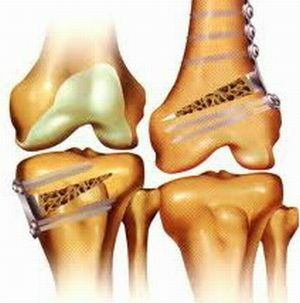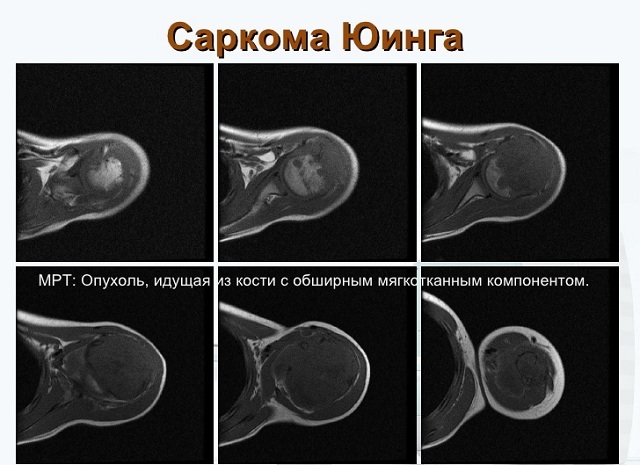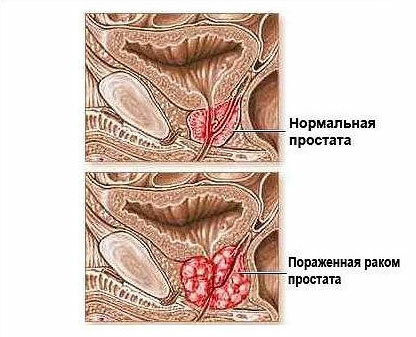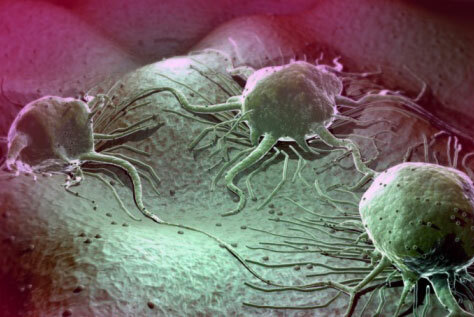 Muffucci syndrome or chondrodysplasia with angiomatosis is a rare congenital disease not inherited, carrying deformities of bones, cartilage of limbs and accompanied by numerous outgrowths of irregular shape on the skin surface.
Muffucci syndrome or chondrodysplasia with angiomatosis is a rare congenital disease not inherited, carrying deformities of bones, cartilage of limbs and accompanied by numerous outgrowths of irregular shape on the skin surface.
Most often, neoplasms in the form of nodules grow on the limbs, completely modifying and deforming them.
Contents of the article
- The first case of the disease
- What is the disease?
- Causes of the genetic plan
- How does the anomaly manifest itself?
- Diagnosis of
- Syndrome Histology of neoplasm
- Approach to therapy
- Difficulty and danger
- Not preventable
First case of
The disease manifests itself, as a rule, in early childhood and gradually progresses, causing more and more suffering. For the first time the case of such a disease was described in 1881 by a doctor by the pathologist A. Muffucci. She was a 40-year-old woman with massive growths on her arms and legs, which completely deprived her of independence and the ability to walk, work, perform basic things.
Skeletal deformities were detected using X-ray, external manifestations of the disease were decided to be removed. As a result of the operation, the patient got an infection in the patient's blood, from which she died.
Muffucci Syndrome is an extremely rare disease. So, since its opening in England, 160 cases have been identified, in the USA - 100. The average life expectancy of patients is 40 years.
What is the disease?
Maffucci Syndrome accompanies:
- Chondromas - originally benign cartilage tumors, most commonly found on phalanges of fingers and long tubular bones. As a result, asymmetric curvature and shortening of limbs occur, secondary fractures may occur. Violated limb functioning and there is a high risk of degeneration into malignant formations( 30-37%).
- Multiple hemangiomas are vascular formations on the surface of the skin and mucous membranes. There are cases of the presence of formations in the nasal cavity, in the tongue, the anterior abdominal wall and so on. They are soft nodules of a bluish color, if damaged, heavy bleeding can occur.
In terms of the structure of hemangiomas, these are thick-walled and thin-walled skin cells and subcutaneous vessels lined with endothelium. They can be called complex venous malformations.
So-called, skin vascular tumors, appearing at an early stage of the disease, increase rapidly enough in size, become soft, bluish, rounded, sometimes painful lesions on the skin, more often in places of altered bones. 
They grow with the growth of a child, and tend to modify the hands and feet in ugly masses in the form of grapes.
This process is accompanied by pathological proliferation of cartilaginous and bony tissues of extremities and metaphyses of long tubular bones.
Active development of the disease lasts until the end of the growth of the skeleton, accompanied by spontaneous fractures and irreversible deformations, both internal and external.
Causes of the genetic plan
The causes of the manifestation of the Maffucci syndrome have not yet been studied by science. It is only known that this is a rare genetic defect in human development.
Appears at an early age, there are cases when the rudiments of the disease were found in a seven-month-old child and actively progresses with the growth of a person, then the condition stabilizes.
How does the anomaly manifest itself?
The first symptoms in a sick child appear most often with the onset of walking and look like this:
- bone deformation, lameness, limb shortening;
- causeless bone fractures;
- the formation of suspicious outgrowths on the skin.
There are also a number of possible anomalies that do not always occur:
- heterogeneous spots of vitiligo on the neck, chest, legs and in other areas;
- atrophy of one half of the brain;
- a large number of moles of different size and location.
Diagnosis of

Syndrome In the photo, the growths characteristic of Maffucci Syndrome
Diagnosis of the syndrome is made on the basis of the overall clinical picture and the results of the studies. As a rule, an x-ray examination of the human skeleton and a histological examination of cutaneous neoplasms are prescribed.
Cartilage tumors, destroying and deforming bones, are well visualized on the roentgenogram. They have a characteristic appearance and are easily identifiable.
In cases when the X-ray does not allow a precise diagnosis, computer or magnetic resonance imaging, a biopsy to determine the nature of the tumors, is prescribed.
Histology of neoplasms
This analysis is necessary because there is a high risk of a transition from benign tumors to malignant chondrosarcoma and others.
Approach to therapy
Despite the level of development of modern medicine, there is no medical treatment for Maffucci syndrome. Orthopedic and surgical treatment is applied.
Thus, minor deformities of the feet are corrected by orthopedic footwear.
In more complex cases, with volumetric tumors and severe deformity, exocculation is shown - removal of the focus with subsequent replacement of part of the bone with an implant. 
The shortening of one limb relative to the other is eliminated in a closed way by means of distraction epiphysis - using special medical apparatus for bloodless lengthening of limbs( for example, Elizarov's apparatus).
In the presence of ossified foci of cartilage growth osteotomy is shown ̶̶ operation with bone dissection, and further measures for its lengthening.
Formations on the skin are removed by surgery - diathermocoagulation( moxibustion) or cryodestruction( destruction by cold).
The life threat of the patient can arise at transition of cells of neoplasms from a good-quality structure in malignant. Then standard methods of fighting with oncology are applied.
Complexities and Dangers
Chondrodysplasia with angiomatosis is in itself a very complex disease. A large number of hemangiomas on the limbs can lead to the fact that a person can not move independently and serve himself.
As formations with a large number of vessels, hemangiomas can lead to heavy bleeding, including internal, as there have been cases of removal of such tumors from the esophagus, larynx, abdominal cavity and so on.
Uncontrolled proliferation of cartilage is fraught with spontaneous fractures, not to mention the asymmetry of the body and limbs.
The most dangerous for life is, of course, cell degeneration and sarcoma formation.
Warn it is impossible
Since the nature of the disease has not yet been fully understood, it is clear only that there is no point in genetics, ways of preventing Maffucci syndrome.
People suffering from such ailment should promptly consult a specialist and be supervised to monitor the course of the disease.
Maffucci Syndrome is another mysterious disease whose etymology is still not understood. Genetic congenital disease manifests itself at an early age and progresses during the entire period of growth of the human skeleton.
Cartilaginous tissue proliferating, mutating and disfiguring bones. Hemangiomas, in turn, cover the outer surface of the body, more often in places where the structure of the skeleton is already broken, adversely affect both appearance and functional features.
Unfortunately, it is impossible to completely cure today. In the forces of medicine only orthopedic and surgical methods to correct the deformities, facilitating the patient's existence.
To a small percentage of the world population that suffers from this disease, it is necessary to carefully monitor its course, to do operations in a timely manner and not to start it, since there is a great risk of changing the structure of the neoplasm cells into various types of sarcoma.



